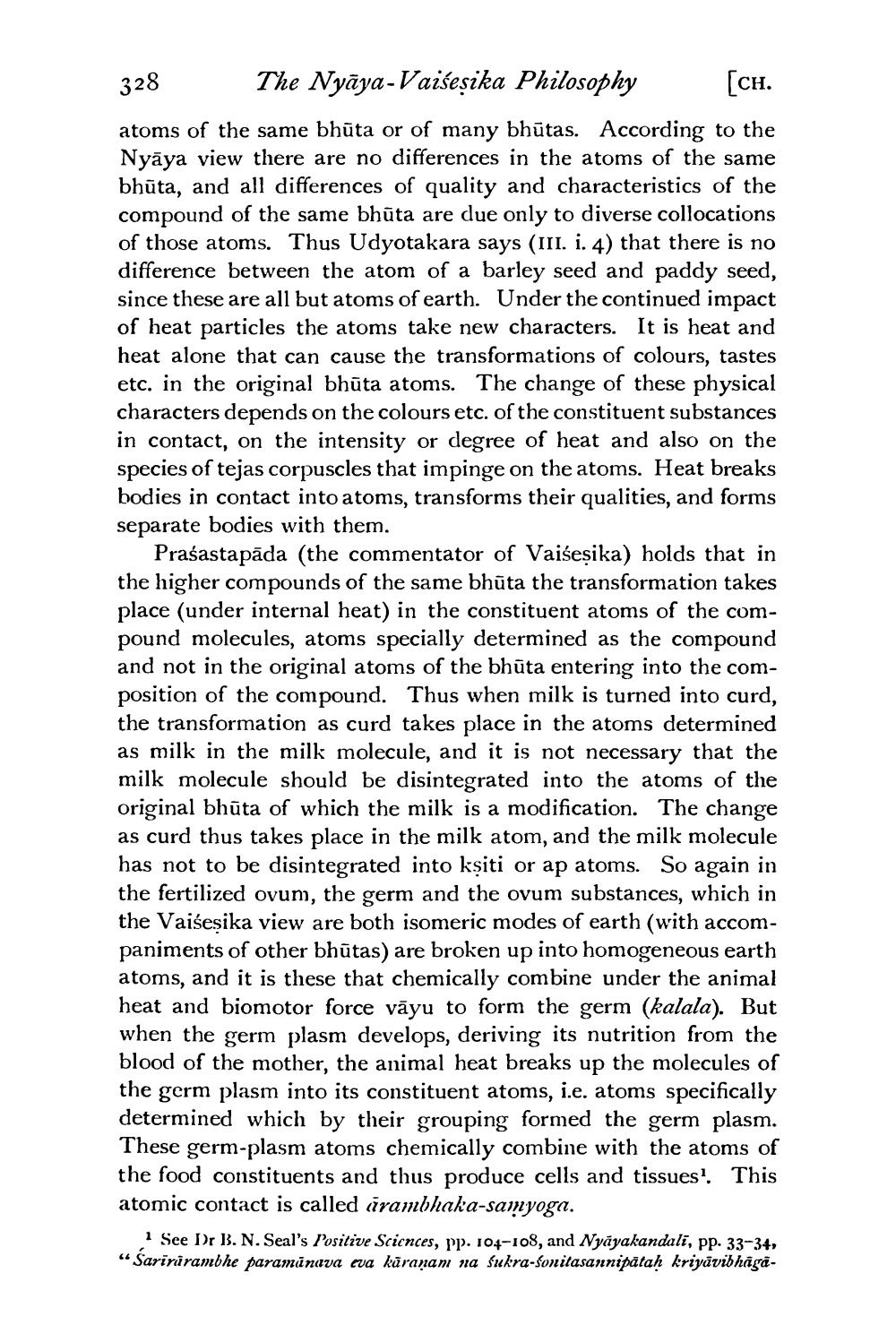________________
328
The Nyaya-Vaiseṣika Philosophy
[CH.
atoms of the same bhūta or of many bhūtas. According to the Nyaya view there are no differences in the atoms of the same bhūta, and all differences of quality and characteristics of the compound of the same bhūta are due only to diverse collocations of those atoms. Thus Udyotakara says (III. i. 4) that there is no difference between the atom of a barley seed and paddy seed, since these are all but atoms of earth. Under the continued impact of heat particles the atoms take new characters. It is heat and heat alone that can cause the transformations of colours, tastes etc. in the original bhūta atoms. The change of these physical characters depends on the colours etc. of the constituent substances in contact, on the intensity or degree of heat and also on the species of tejas corpuscles that impinge on the atoms. Heat breaks bodies in contact into atoms, transforms their qualities, and forms separate bodies with them.
Prasastapāda (the commentator of Vaiseṣika) holds that in the higher compounds of the same bhūta the transformation takes place (under internal heat) in the constituent atoms of the compound molecules, atoms specially determined as the compound and not in the original atoms of the bhuta entering into the composition of the compound. Thus when milk is turned into curd, the transformation as curd takes place in the atoms determined as milk in the milk molecule, and it is not necessary that the milk molecule should be disintegrated into the atoms of the original bhūta of which the milk is a modification. The change as curd thus takes place in the milk atom, and the milk molecule has not to be disintegrated into kṣiti or ap atoms. So again in the fertilized ovum, the germ and the ovum substances, which in the Vaiśesika view are both isomeric modes of earth (with accompaniments of other bhūtas) are broken up o into homogeneous earth atoms, and it is these that chemically combine under the animal heat and biomotor force vayu to form the germ (kalala). But when the germ plasm develops, deriving its nutrition from the blood of the mother, the animal heat breaks up the molecules of the germ plasm into its constituent atoms, i.e. atoms specifically determined which by their grouping formed the germ plasm. These germ-plasm atoms chemically combine with the atoms of the food constituents and thus produce cells and tissues'. This atomic contact is called arambhaka-samyoga.
1 See Dr B. N. Seal's Positive Sciences, pp. 104-108, and Nyayakandali, pp. 33-34, "Sarirarambhe paramānava eva kāraṇam na Sukra-Sonitasannipataḥ kriyāvibhāga




